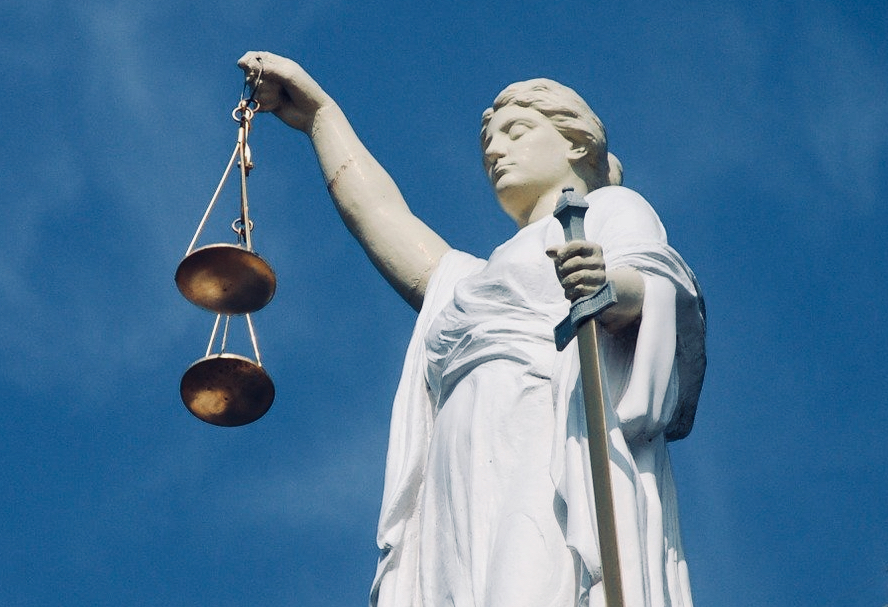The case of Barbie Kardashian and the decision to house him in Limerick Prison amongst female prisoners drew Irish people’s attention to the concept and consequences of men being able to self identify as women and wider issues surrounding the question of where trans prisoners should be housed and with whom.
To be clear, Barbie Kardashian is male, has male genitalia and has expressed a desire to harm women, something he has done in the past. However, he does have a gender recognition certificate which allows him to legally call himself a woman and hence the decision to hold him in a women’s prison. The decision was controversial and condemned by many feminists, but supported by people who should know better, like the Irish Penal Reform Trust (IPRT), who did not comment on the case despite advocating such measures in their 2016 report Out On The Inside. Amnesty International is also another organisation that has abandoned women’s rights and safety in prison.
Before looking at where prisoners are held, we should be clear that prisons are places of punishment, the only punishment imposed is confinement and separation from society. No other additional punishments are considered, and though prisons are an inhumane and dehumanising solution they were actually a progressive advance on floggings, public executions and deportations. In a sense they were a reform of the criminal justice system and have been undergoing reforms ever since, though there have major retreats on prison conditions around the world, particularly in the USA. The modern concept of prisons and their purpose is best summed up in the UN Standard Minimum Rules of the Treatment of Prisoners known as the Mandela Rules. Rule 4, subparagraph 1 and 2 state:
1. The purposes of a sentence of imprisonment or similar measures deprivative of a person’s liberty are primarily to protect society against crime and to reduce recidivism. Those purposes can be achieved only if the period of imprisonment is used to ensure, so far as possible, the reintegration of such persons into society upon release so that they can lead a law-abiding and self-supporting life.
2. To this end, prison administrations and other competent authorities should offer education, vocational training and work, as well as other forms of assistance that are appropriate and available, including those of a remedial, moral, spiritual, social and health- and sports-based nature. All such programmes, activities and services should be delivered in line with the individual treatment needs of prisoners.[1]
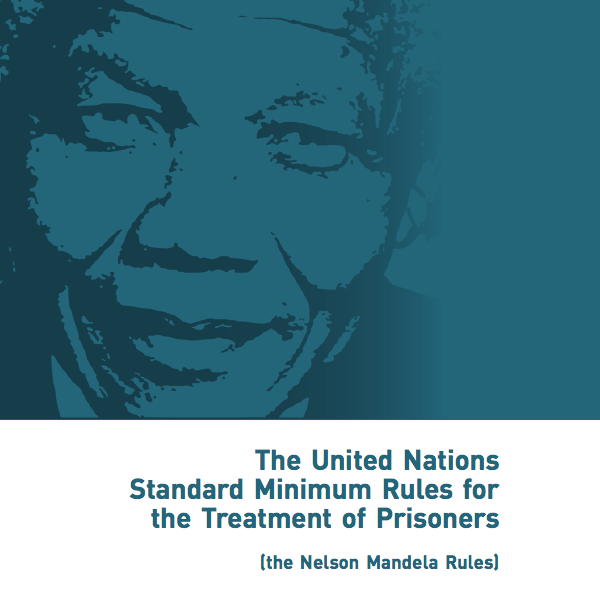
No prison regime in the world lives up to this, though some do in relation to some prisons or wings within them. But the point is that prisons are not just places to hold people and throw away the key. A further point in the rules that is relevant to the debate on trans prisoners in women’s prisons concerns safety. Rule 1 clearly states “The safety and security of prisoners, staff, service providers and visitors shall be ensured at all times“ (bold added). Prison authorities don’t get to suspend security at any time or deliberately place prisoners at risk. It is for this reason that Rule 11 stipulates the separation of prisoners, “taking account of their sex, age, criminal record, the legal reason for their detention and the necessities of their treatment”. So women are separated from men, convicts from remands, violent offenders from non violent offenders and of course children from adults. There is a logic to keeping children in units or institutions that have no adult prisoners, and it is because children are vulnerable in such situations. This is also part of the reasoning in relation to women, or rather was part of the reasoning, which has now been thrown out the window in the Barbie Kardashian case and in a previous case. The Irish Prison Service has had some difficulty in meeting all of these rules, particularly around violent and non-violent offenders, but had managed to keep children in separate units and previously women also.
The question now arises as to why men are being held in women’s units and also why not. Part of the problem stems from the belief that men who identify as women are women, a point that cannot be accepted and neither can what seems a more “reasonable” position that such people would be at risk in a male prison, an argument that contradicts the assertion that people like Barbie Kardashian are not a threat to women or that their presence places women in any danger. The IPRT’s attempt to deal with the issue, which neatly sums up the woke philosophy on transgender issues, is actually contained within a broader report on LGBT prisoners in general, which is methodologically questionable given the rather unique situation of trans prisoners and also the problems that arise from self identifying as female or male. They point to numerous failings in the area, not least that few jurisdictions use LGBT as a category by which to identify or classify prisoners and so in Ireland figures, are at best a guess. They further point out that violence and discrimination exists both within Irish society and also amongst the prison population. Prisons are dangerous places, and some groups, racial, ethnic, LGBT, religious, may, depending on the country and prison be at a greater risk of violence within prisons.
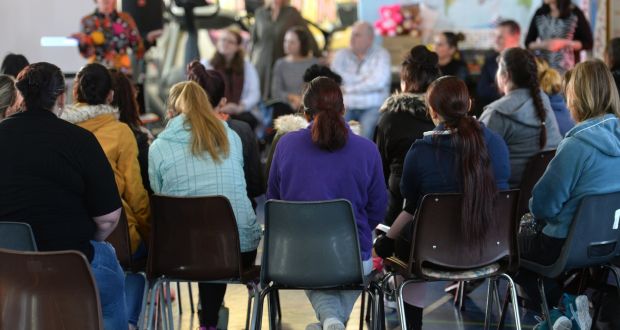
So far so good, there is nothing controversial in such statements, but what to do about it is the real question and how many of the problems could be improved or eliminated by overall improvements in prison conditions in general. The IPRT, and it is to be presumed many NGOs like Amnesty International, quick fix solution is to mix men and women together, a regression in penal reform policy that brings us back to the 19th Century. It has to be said, that on no other issue would the IPRT reach for quick fix solutions, penal reform documents on drug abuse for example, tend to propose structural and policy changes on needle exchange etc. that cannot be implemented overnight. The IPRT deliberately mixes all experiences and LGB prisoners experiences are used to refer also to trans prisoners automatically, when as stated this is methodologically dubious. The solution of transferring men who identify as women to women’s prisons is supported, arguing against what they term “genitalia-based placement” as discriminatory, though the reasons given for it are not borne out by the statistics. The main concern is around violence against trans prisoners in male prisons though the report states that:
There has been minimal research on sexual abuse in prison and the extent of the problem is not known. Sexual violence in prison is hidden and under-reported. While studies have been conducted in different jurisdictions there is reason to be cautious of transferring results as rates of sexual violence may vary greatly between different prison systems due to factors such as crowding, levels of surveillance and distinct prison cultures (Yap et al, 2011). This is particularly the case with data from the US, as several studies have acknowledged that the problem of sexual violence within the US prison system is particularly acute (National Prison Rape Elimination Commission Report, 2009; Beck et al, 2013). However, this research does suggest that while prisoners in men’s prisons are primarily at risk from other prisoners, in women’s prisons prison staff are the main perpetrators of sexual violence.
National Prison Rape Elimination Commission Report, 2009 [2]
The lack of research did not cause them to err on the side of caution in holding males in female facilities and the particular nature of the US situation, where rape is at epidemic levels did not stop them referring to it, when clearer more reliable statistics are available from a prison jurisdiction that bears a greater resemblance to the Irish system, namely that of Britain. Such statistics are published by their sister organisation the Penal Reform Trust (or perhaps it is their non-binary organisation) and the prison service there. Unfortunately, Irish prison statistics are limited to just counting prisoner on prisoner assaults without stating the nature of the assault (prisoner on staff assaults are also included but not staff on prisoner assaults).
According to a 2018 report from the British Ministry of Justice, 1,742 reports of a variety of sexual assaults were reported between 2002 and 2014.[3] These figures as with sexual assaults in wider society almost certainly fail to represent the true figures, but they are the figures available and are indicative of the nature of the problem and the only ones that the prison authorities can use in order to define policy. The report points out that in the later years there was a noticeable increase in assaults with 170 incidents in 2013 and 228 in 2014, representing 23% of all cases over a twelve year period.[4] The MOJ divides sexual assault into various categories:
- Assault involving groin or genital contact of either party (touching of these body areas, clothed or unclothed).
- Assault involving no groin or genital contact of either party (touching of other body areas not including genital or groin areas, clothed or unclothed).
- Non-penile penetration (penetration of vagina or anus with anything other than penis).
- Rape (penetration of vagina, anus or mouth by penis).
- Sexual activity without consent (where victim is forced to participate in a sex act with assailant or forced to masturbate or engage with a third party).
- Sexual harassment including exposure (including verbal threats or harassment and exposure including masturbation in front of someone, but no evidence of physical touching or contact).
- Insufficient information (where a lack of information made it difficult to categorise the nature of the sexual assault).[5]
Amongst the reasons given by the IPRT for holding men in women’s prisons is that transgender inmates may be subject to sexual harassment or assault in the showers noting that
Transgender and intersex individuals may also experience violence and voyeurism in the context of prison showers, particularly if their bodies display primary or secondary sex characteristics that draw unwanted attention. This may require individual or private shower facilities. This is of particular concern in the Irish context where 45% of prisoners are still required to use the toilet in the presence of another (IPS, 2015b). Such provisions need to be considered as part of the safety management for all transgender and intersex prisoners.[6]
The IPRT is being deliberately disingenuous mixing the issues of trans prisoners with intersex prisoners. Intersex is a genetic condition, the person concerned has no choice in the matter. They also do a great disservice to the cause of prison reform by reducing the issue of privacy in toilets and showers to one of the needs of transgender prisoners. It is not. It is an issue for all prisoners throughout Ireland and how that is solved by throwing men into the same wings as women is beyond me. It is solved by structural changes to prison facilities. If trans bodies draw unwanted attention, how much attention would a naked Barbie Kardashian draw in a women’s facility where showers are communal? Quite a lot, I would imagine, and would make some women (if not all) uncomfortable. Complaints were filed in the USA on this very point.
“The Plaintiffs have been forced to share intimate facilities with men, who allege they are women,” the Feb. 15 complaint states. “These men openly express their sexual desire for the women inmates, at times, in the showers, and bathrooms, while women are naked or partially clothed.
“The men expose themselves, intentionally, for their own sexual gratification, causing the Plaintiffs to suffer disgust, embarrassment, humiliation, stress, degradation, fear and loss of dignity.”[7]
This is not an isolated incident. Indeed, the type of prisoners being housed with women are not some stereotypical vulnerable prisoner. Before Barbie Kardashian ever graced the women’s prison, another trans prisoner had already passed through. In 2019 a prisoner who had been convicted of one count of cruelty against a child and ten counts of sexual assault was housed amongst women, though accompanied at all times by two prison officers. And to be fair the IPRT was a bit bitter in relation to the case and acknowledged that there were “safety concerns, whether the transgender person is accommodated in a male prison or a female prison”[8] though the latter case does not seem to be an overriding concern given its deafening silence on Mr Kardashian. Though shower rape is not as prevalent as the IPRT would make out. In Britain the statistics indicate that 4% of all sexual assaults take place in the showers/toilets and 7% of all rapes. Bathroom facilities tend to be very enclosed for obvious reasons. But by far the greatest risk of sexual assault and rape occurs in prison cells. According to the British MOJ 76% of rapes take place in cells and 7% in shower facilities and although few rapes occur in the social areas of the prison, 13% of all sexual assaults occur there,[9] in an area in which there are other prisoners and presumably it is monitored by prison officers. The issue of cells is important, the IPRT citing the prison service states that just over 54% of prisoners are held in single occupancy cells.[10] The danger to trans prisoners is the same one that other prisoners run and is not solved by placing men in custody with women, it is solved by either building more prison places or preferably reducing the use of confinement for prisoners awaiting trial and for those on short sentences.
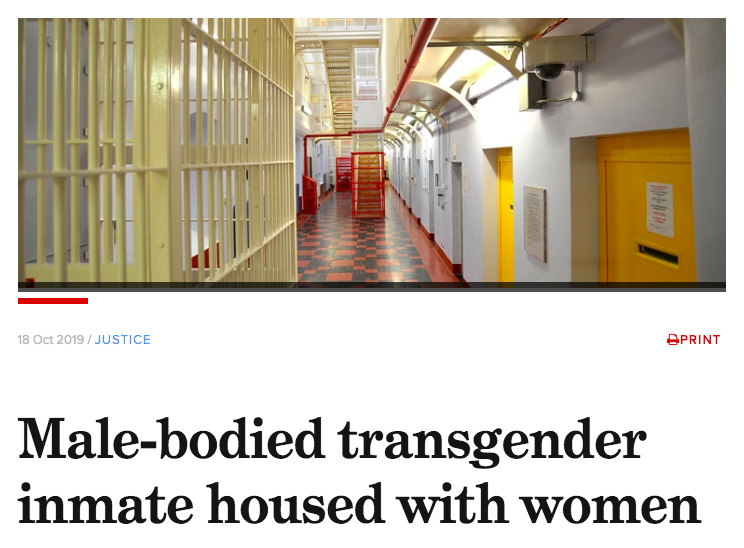
The IPRT again retreats from prison reform and proposes that at “a minimum, institutions should respect objections made by LGBT prisoners to specific cellmates”.[11] And so they should, no prisoner should be forced to share a cell with someone they consider a risk to themselves. But again this is a problem with overcrowding and redefining larger cells as double occupancy massaging the figures on overcrowding is problematic to say the least.
But the question of sexual assault is real in prisons, mainly for males but also for females. The British figures show that in that jurisdiction 23% of all sexual assaults in prison are committed by sex offenders and 21% by people convicted of a violent offence against the person. However, in the case of rapes the figure for attacks by sex offenders rises to 32%.[12] Interestingly sex offenders are also most likely to be victims of sexual assaults along with violent offenders (18% each).[13] Thus it is clear that lots of people are at risk of violence in prisons, which is not solved by placing men in women’s units. But the IPRT and others don’t see it that way. They favourably quote in their report a person stating the following:
I think the solution from a safety point of view it would probably be easier for a man transitioning to a woman to go into a woman’s prison, but for a woman transitioning to a man to come into a man’s prison… you would definitely have to put them aside [in protective custody].[14]
Why is this the case? Surely if transwomen are women, then transmen are men and all that it entails, which means women are less violent, in general, and men are more violent. If transwomen are women then transmen are men and there should be no problem with transmen (i.e. biological women) being held with men. But obviously this is not true. Nobody disputes that transmen would be at risk in a male prison: absolutely nobody, not the prison service, the courts, not the women who claim to be men themselves and not even the vociferous trans rights activists who threaten to rape JK Rowling, not even the IPRT and Amnesty International. Yet the IPRT and others suspend not only this common sense notion but statistical fact when it comes to men who claim they are women. To be clear no one is saying that female prisoners are some docile cohort who have never done anyone any harm, but the statistics on male proclivity to violence versus female are quite clear and also women tend to be convicted for lesser non-violent crimes and that is a statistical fact. In Britain 80% of women serving sentences are there for non-violent crimes,[15]and in Ireland prison service data from 2017 showed that 95% of women were in prison for crimes such as shopliftingand handling stolen goods[16]. But as transwomen are women for the TRA ideologues, they are presumed to be also less violent and yet in the IPRT report they included this quote without comment.
I somehow had managed to convey a certain subliminal message to most of the people in the prison that like yeah I might look different and I might be this and that, but I’ll cut your fucking throat in two minutes flat …but it’s a really harsh way to have to live your life, but, you know, you were on tenterhooks in prison, you have to have eyes in the back of your head. You don’t know where the blade is coming from, you don’t know who’s saying what, and you don’t know whose toes you’ve stepped on out here [outside of prison]. (Rachel, transgender woman).[17]
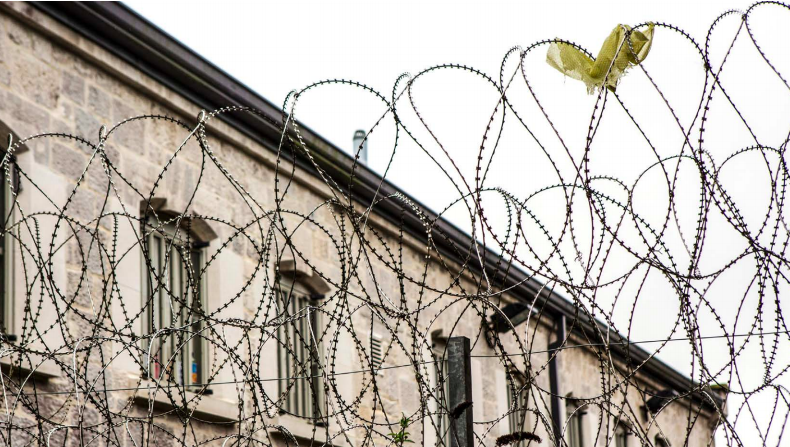
What this quote indicates is that this trans prisoner is more than capable of violence and transmitting that message to other prisoners in a convincing manner and that there is a general problem with violence in prisons, including trans prisoners that the IPRT and others aim to resolve by transferring men to women’s prisons. This particular prisoner seems to be at no greater risk than other male prisoners but would represent a problem for female prisoners.
It is not clear how many trans prisoners there are in Ireland and the Irish Prison Service’s figures are not as clear as those provided in Britain, itself a major problem when it comes to making policy. But last year 11 transgender prisoners in England and Wales were sexually assaulted. According to the BBC “there were 163 transgender prisoners in jails in England and Wales, 129 of them in men’s prisons and 34 in women’s prisons, an increase of 30 on 2018. Most self-identified as female.”[18] Thus if we presume that the transgender prisoners assaulted were in male prisons that represents 7% of all trans prisoners. However, this is an argument for greater safety in prisons in general and not their transfer to a women’s prison as “out of 124 sexual assaults in five women’s jails over the previous nine years, from 2010 to 2018, seven had been carried out by trans prisoners”[19] i.e. 5.6% of the total. None of those sexual assaults would have occurred had the men not been held in women’s facilities.
A last point on the issue of trans prisoners in prisons in general concerns the staff. Who searches them? The IPRT and others hold to what they claim is best international practice and that is that “where transgender prisoners are concerned, the wishes of the person being searched should be given primacy”[20]. This is nothing short of the sexual abuse of female prison officers as not only do they have to carry out searches, the occasions on which strip searches are carried out, the prisoner could insist on subjecting a female officer to witnessing the strip. The prison officers themselves have sought guidance from the government on the issue as they are clearly unhappy with being left holding the ball and it seems that they are not as sure as the IPRT and Amnesty International that a woman legally may or should search a man just because he requests it.[21] There is another aspect to this pointed to by Rhona Hotchkiss, a former governor of prisons in Scotland that the day will come when a trans prison officer may be allowed to search female prisoners. She points out that strip searching is traumatic and would be even more so the case were women searched by men identifying as women.”[22] The IPRT has little or no interest in defending women, neither prisoners nor staff. Its misogyny is evident in that at one point in the report it has difficulty using the word lesbian and instead talks of “non-heterosexual female prisoners”. What is wrong with saying Lesbians? Or Lesbian and bisexual female prisoners?
The most vulnerable group in prison are not trans, they are women. As Hotchkiss points out “there is scant regard for the emotional wellbeing of women in prison” lots of situation in relation to searches, trans prisoners parading around with erect penises to the obvious discomfort of women prisoners and other behaviour add to it. But most female prisoners are psychologically vulnerable before they ever get to prison. Women make up 5% of the prison population in Britain and 67% of them reported having a mental health problem compared to 43% of men, 59% considered they had a problem with alcohol, 53% had experienced emotional, physical or sexual abuse compared to 27% of men and of really great concern is the fact that 46% of them had attempted suicide at some point compared to 21% of men and 25% have symptoms of psychosis compared to 15% of men.[23] In Ireland, many women in prison had problems with substance abuse and homelessness which was a factor in the offences they had committed[24], and 32% of the women in the Dóchas Centre in Dublin, and 41% of the women in Limerick,[25] were on methadone (compared to 14% across the prison population), usually used to wean people off opiates. According to John Lonergan, a former governor of Mountjoy Prison, “A huge number of women who get into difficulty with the law have many personal issues, including addiction, ever before they get involved in criminality.”[26]
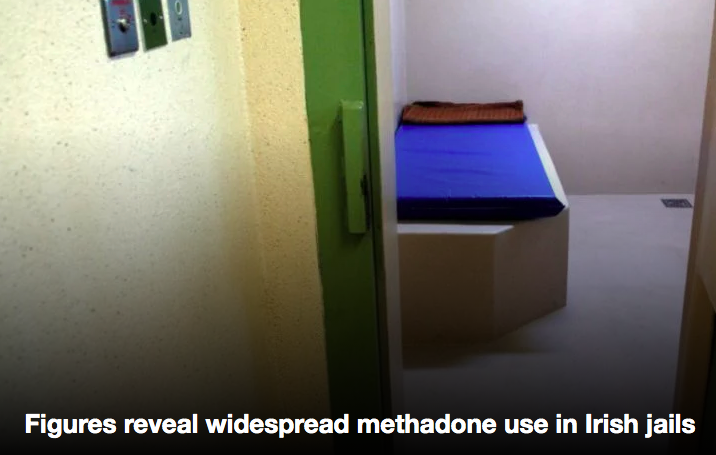
This is the prison group that needs protecting more than any other and most certainly does not need the added angst of men in their midst, exposing themselves, threatening them or in other ways harming or assaulting them.
There is one solution to this, which though not perfect and it will throw up its own problems, does at least remove the possibility of men being held with women, and that is the building of a specialised unit for trans prisoners. There already exists one such unit in Britain which opened in 2019. It is the nearest proposal to prison reform in all of this sorry debate, but the IPRT and Amnesty International have not called for one, perhaps conscious that the government is unlikely to increase the budget for prisons, and have opted for throwing women under the bus as the cheap alternative that assuages the misogynistic demands of so called trans rights activists.
On the issue of trans prisoners, groups like the IPRT have abandoned notions of prison reform, opting for quick fix solutions that do nothing to solve the problems in prisons and place women at risk of sexual and other forms of violence. When it comes to the problems the prisons face in dealing with trans prisoners, there was a long list of demands to be made that benefit all prisoners, something that they would have done automatically 20 years ago. What can be gleaned from their report, and the arguments advanced by others who use it, is that the Irish Prison Service is not fit for purpose. Neither is the IPRT fit for the purpose of advocating for prison reform when it proposes regressive measures on the separation of sexes in prison and is incapable of formulating fact based arguments.
Gearóid Ó Loingsigh
@gloingsigh
www.equipopueblos.com
About the author: Gearóid Ó Loingsigh is a political and human rights activist in Latin America and has published a number of reports on prisons in Colombia. Prior to the Covid-19 pandemic he regularly visited prisons in Bogotá, Medellín, Cúcuta, Bucaramanga and Valledupar to carry out workshops with prisoners. Gearóidhas given talks to and workshops with grassroots rural and student based organisations on prison issues and also conflict and development.
previous articles:
GREENLIGHT GIVEN TO ALLOW MEN IN WOMEN’S PRISONS
Placing men in women’s prisons: The new woke fad
Interview with Gearoid
[1]UNODC (2015) The United Nations Standard Minimum Rules of the Treatment of Prisoners (the Nelson Mandela Rules) General Assembly Resolution 70/175 appendix, approved December 17th 2015 https://www.unodc.org/documents/justice-and-prison-reform/Nelson_Mandela_Rules-E-ebook.pdf
[2]IPRT (2016) Out on the Inside: The Rights, Experiences and Needs of LGBT People in Prison. IPRT. Dublin p. 24 https://www.iprt.ie/iprt-publications/out-on-the-inside-the-rights-experiences-and-needs-of-lgbt-people-in-prison/
[3]MOJ (2018) Analytical Summary 2018: Sexual Assaults Reported in Prisons: Exploratory Findings from Analysis of Incident Descriptions p.1 https://assets.publishing.service.gov.uk/government/uploads/system/uploads/attachment_data/file/737991/sexual-assaults-reported-prisons-exploratory-findings.pdf
[4]Ibíd., p.2
[5]Ibíd., p.3
[6]IPRT (2016) Op. Cit. p.21
[7]Hanna, B. (22/02/2017) Transgender bathroom battle smolders in Fort Worth federal prison https://www.star-telegram.com/news/local/fort-worth/article134353039.html
[8]Law Society Gazette (18/10/2019) Male-bodied transgender inmate housed with women. https://www.lawsociety.ie/gazette/top-stories/male-bodied-transgender-inmate-housed-with-women-prisoners/
[9]MOJ (2018) Op. Cit. p. 10
[10]IPRT (2016) Op. Cit. p.7
[11]Ibíd., p. 28
[12]MOJ (2018) Op. Cit. p.10
[13]Ibíd., p. 11
[14]IPRT (2016) Op. Cit. p28
[15]PRT (2019) Bromley Briefings Prison Factfile Winter 2019. p. 34 http://www.prisonreformtrust.org.uk/portals/0/documents/bromley briefings/Winter 2019 Factfile web.pdf
[16]Gabija, G. et al (23/04/2019) Almost all women in Irish prisons are there for committing petty crime https://www.thejournal.ie/women-prison-ireland-petty-crime-4596708-Apr2019/
[17]IPRT (2016) Op. Cit. p.24
[18] Shaw, D. (21/05/2020) Eleven transgender inmates sexually assaulted in prisons last year https://www.bbc.com/news/uk-52748117
[19]Ibíd.,
[20]IPRT (2016) Op. Cit. p. 21
[21]Bracken, A. (18/10/2020) Prison officers demand guidelines on transgender inmates https://amp.independent.ie/irish-news/prison-officers-demand-guidelines-on-transgender-inmates-39637102.html?__twitter_impression=true&fbclid=IwAR01499ftokktSsVnjv2lqVLX04h5f5dOBsXEoyAx3xNCXaG9V9Utul2_AA
[22]See video https://www.youtube.com/watch?v=KpfTBEXqGQM&feature=youtu.be&fbclid=IwAR1CcxPkak3sGhJ3t3LpiJRrUFnXhWSEsjfYEw8Z8UYhZCNk8qrPV6goG-8 the video is also a very good argument on prison issues and worth watching.
[23]PRT (2019) Op. Cit. pp 35-36
[24]Gabija, G. et al (23/04/2019) Op. Cit.
[25] Murphy, E. (28/10/2020) Over one-third of female prisoners are on methadone, which is normally used to treat heroin addiction https://www.newstalk.com/news/figures-reveal-widespread-methadone-use-irish-jails-1096745
[26] Ibid.
